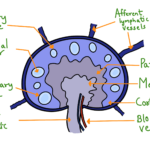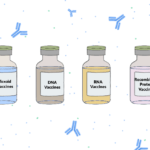In this era of the COVID-19 pandemic, every person, be it from a scientific or non-scientific background, knows the word “PCR”. But what does that mean? Why is it used and the principle behind using it? This article intends to provide basic aspects and understanding of the PCR technique and its application in the field of science. Kary Banks Mullis, an American biochemist, received Noble Prize in Chemistry in 1993 for his significant contribution to the world of Science, i.e., the Polymerase Chain Reaction (PCR) technique.
What is PCR?
In simple words, PCR is a molecular technique to amplify the desired/target DNA or a gene in an exponential manner. Before the advent of PCR, the main limitations in molecular biology was the quantity of DNA for research and diagnostic purposes. However, the problem was solved by this significant scientific development and Taq polymerase. The PCR amplification has changed the profound effect on all molecular studies like detecting very low numbers of pathogens with great accuracy, detecting carrier animals, mixed populations of pathogens in an infection, and determining the pathogen load. Thus, PCR is the fundamental basis of genetic studies.
Principle of PCR:
The PCR is an enzymatic reaction for the amplification of DNA using primers and DNA polymerase. There are three fundamental steps followed to amplify DNA stepwise in the PCR, namely:
Denaturation:
In order to amplify the double-stranded DNA, the perquisite is to make the strands separate, thus breaking the hydrogen bonds between the bases. This is done by heating the dsDNA at 94 ºC. Now the DNA is single-stranded and accessible to primers as a template.
The denaturation step also ensures the activation of DNA Polymerase at these high temperatures.
Annealing:
The reaction mixture has forward and reverses primers that anneal at their complementary positions on the ssDNA template strand at around 50 ºC to 60 ºC.
Elongation:
The reaction mixture also contains heat-stable DNA polymerase, PCR buffer, dNTPs, MgCl2 (Mg2+). These all components extend the new synthesizing DNA using primers from 5’ to 3’ direction at 72 ºC and ensure all DNA copies are extended.
This cycle is repeated 20-30 times, and during each cycle, the amplicons increase exponentially.
Furthermore, the reaction is stopped by storing the reaction at a lower temperature of 4 ºC.

Components of PCR:
A typical PCR reaction has 5-6 components as follows:
Template DNA:
The sample DNA that we need to amplify is required. It should be less than 3kb. The template DNA should be free of endotoxins, RNA and proteins. It is important to note that the outcome of the PCR depends on the quality and integrity of the template DNA.
DNA polymerase:
DNA polymerase is the enzyme that drives the PCR. The work of polymerase is to add a complementary base to the base of the template strand to synthesize a new strand. DNA polymerase enzymes are thermostable enzymes, which means they are stable and active over a range of temperatures. Polymerase enzymes have three activities 5’ to 3’ Polymerase activity which adds the new bases to synthesize new strand, 3’ to 5’ exonuclease activity which is a proofreading activity in case a wrong base is inserted by mistake and also 5’ to 3’ exonuclease activity. The most common polymerase used in PCR is Taq polymerase which is isolated from a seaweed Thermus aquaticus. Taq polymerase, however, lacks 3’ to 5’ proofreading activity. Some of the other polymerases used in PCR include T4, T7 and Klenow polymerases.
DNA primers:
DNA primers are short single-stranded DNA sequences known as oligodeoxyribonucleotides or oligomers. Primers are about 18-20 base pair long DNA sequences. PCR uses two primers known as forward and reverse primers. As we know, DNA has double-stranded its amplification requires two primers. One primer anneals to forward strand while other anneals to reverse strand. The DNA polymerase enzyme recognizes these short ssDNA sequences, and amplification is done. The design of these primers is a very critical step for a PCR to work. A primer is designed by considering properties like GC content, self-complementarity, potential hairpin loop formation and Tm.
Deoxynucleotide triphosphates (dNTPs):
As the extension takes place, the DNA polymerase enzyme adds new dNTPs to synthesize a complementary strand. Hence, it is essential to maintain a proper concentration of dNTPs in a PCR mixture.
PCR Buffer:
The role of buffer in PCR is to provide an ionic strength and buffering capacity. The standard buffer used in PCR consists of 10mM Tris-HCl with pH ranging between 8.3-8.8. Sometimes 50mM KCl can be used to facilitate primer annealing. PCR mixture is provided with a certain amount of MgCl2. MgCl2 acts as a cofactor in the PCR. Mg2+ ions form complexes with dNTPs and make them available and recognizable by the DNA polymerase enzyme.
Thermal cycler:
Once everything is added to the PCR mixture, the PCR tubes are kept in a machine known as a Thermal cycler for PCR. Thermal cycler has the provision to set up the PCR cycle by giving inputs in the form of time for a step along with temperature for that step. As the name suggests, the thermal cycle is responsible for cycling temperature, which is the key to PCR.

Types of PCR:
From discovering the PCR, PCR has been a great tool in molecular biology with a wide range of applications in various fields. Many variants of the technique have been developed over time. The variants include types like colony PCR which employs the addition of bacterial colony in PCR mixture tube to obtain a DNA template, RT-PCR, which stands for Reverse Transcriptase PCR (Uses RNA as a template to obtain DNA by using Reverse transcriptase enzyme), qRT-PCR, which is a quantitative PCR giving the real-time quantification of the PCR product, nested PCR which uses two primer sets in a single reaction and many more.
Applications of PCR:
CR has its applications in a wide range of fields. From the discovery of PCR, many techniques have been developed whose prerequisite is a PCR reaction to amplify DNA. One such application is molecular diagnostics, in which a PCR is used to detect the presence of the pathogen in a sample. Detection of SARS-CoV-2 Virus in samples of patients by PCR is one such molecular diagnostic application of PCR. PCR is widely used in cloning procedures. In cloning techniques, the gene that needs to be cloned is first amplified using PCR by inserting restriction sites for the restriction enzymes in the primers; also, after ligation in the plasmid of choice, PCR confirms the insertion of a gene by using gene-specific primers. In plant biology, molecular marker detection is necessary to identify natural variants better suited for different conditions. PCR can be employed for the detection of molecular markers in plants. To sum up, the discovery of PCR has become an essential tool in research for scientists worldwide.



